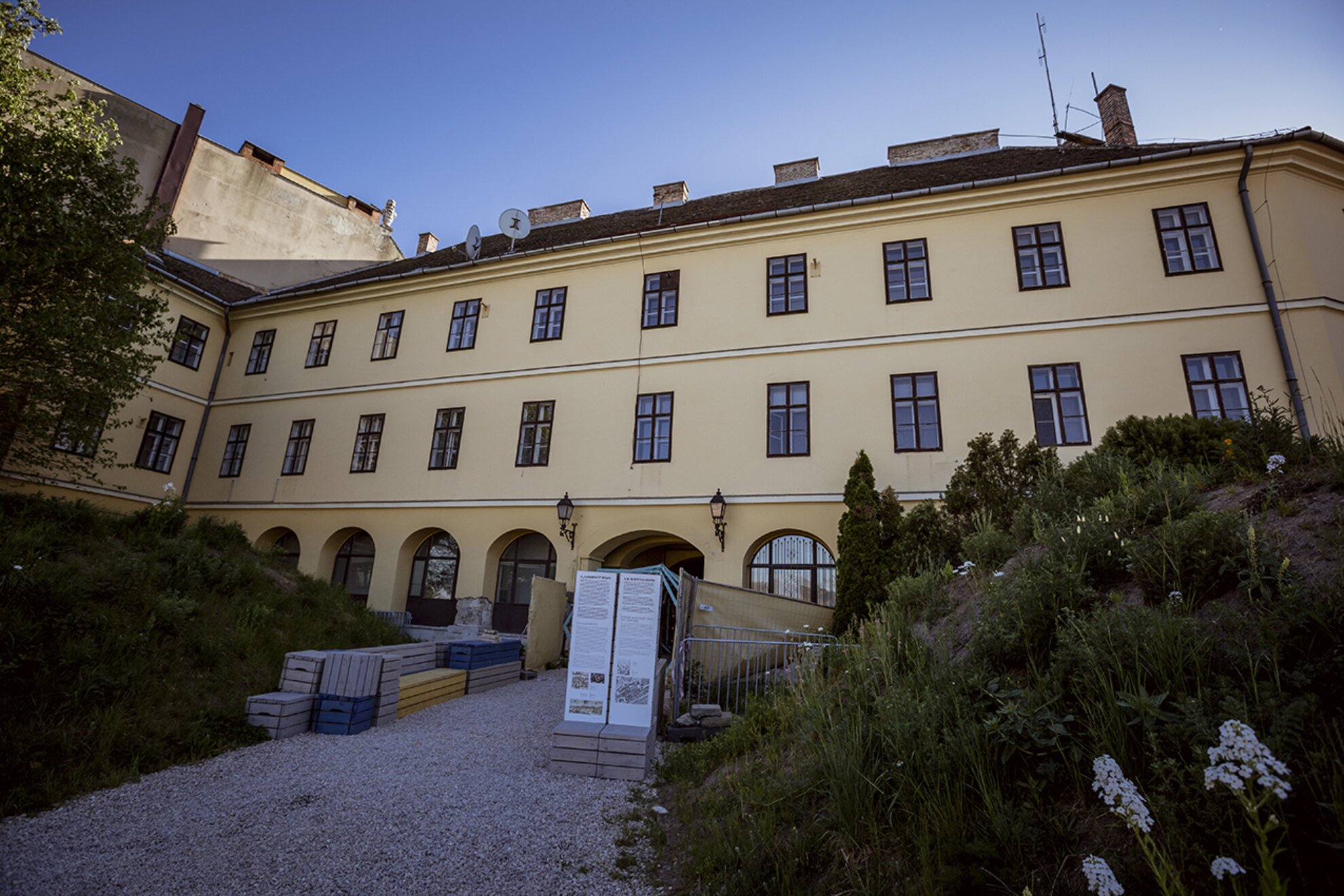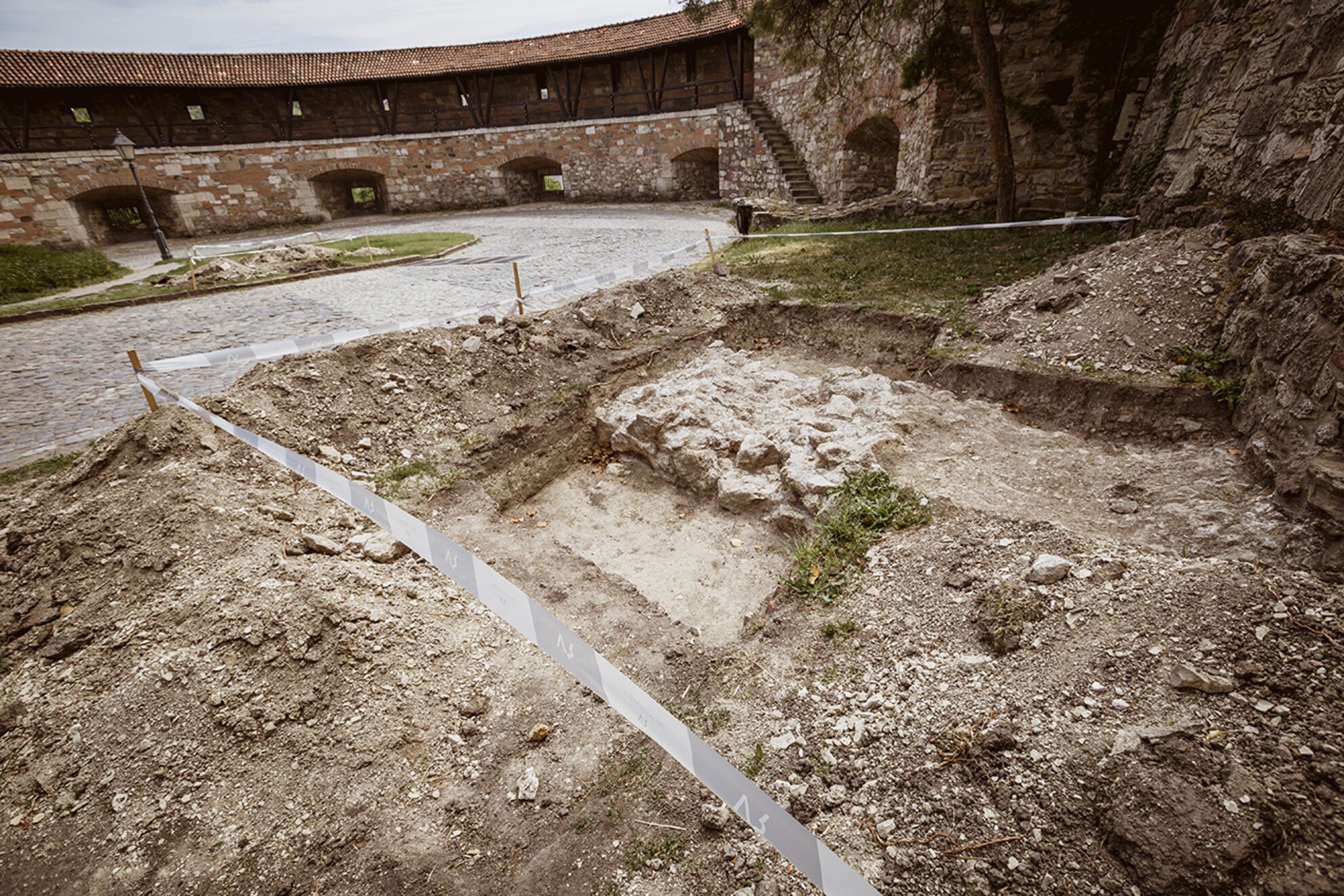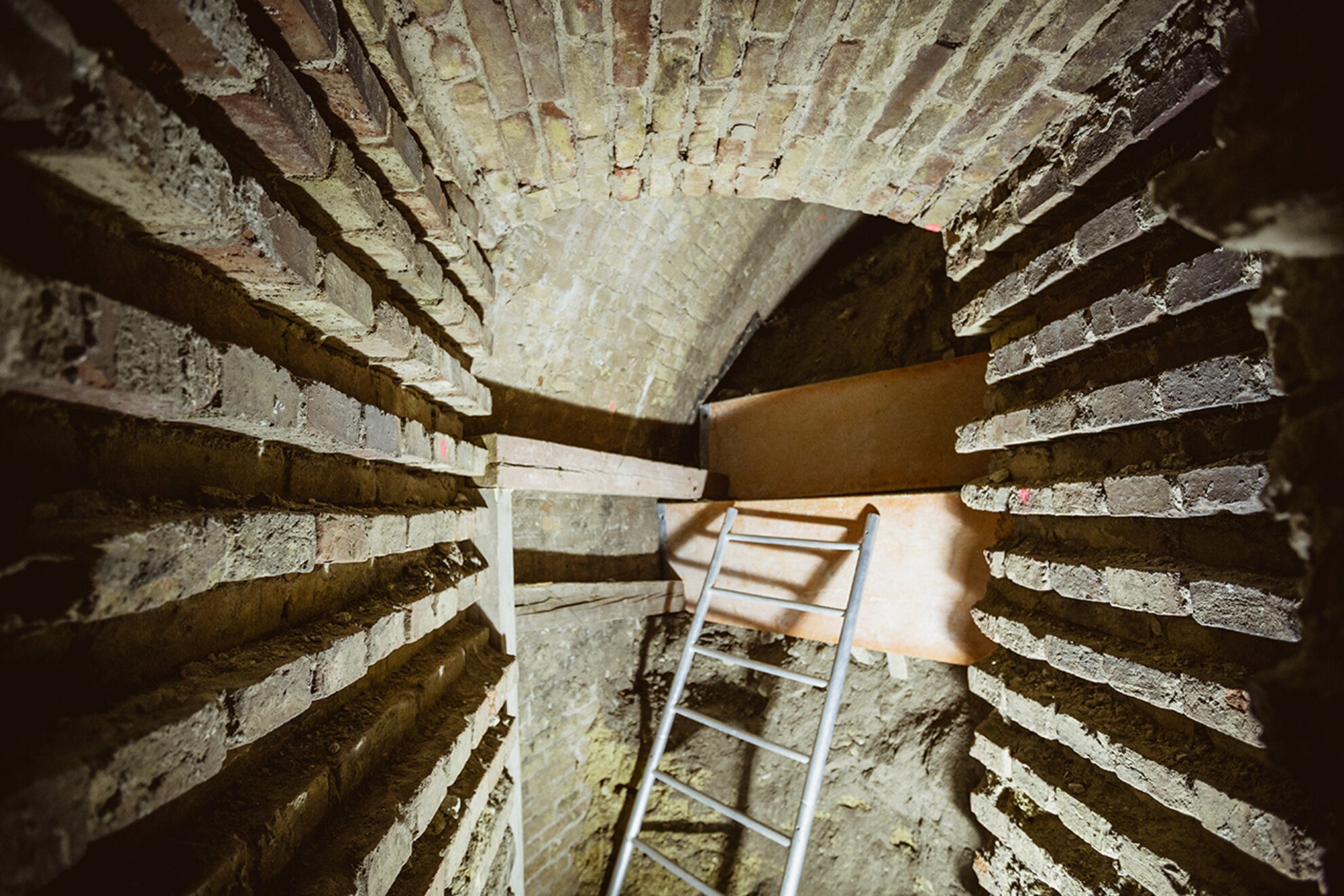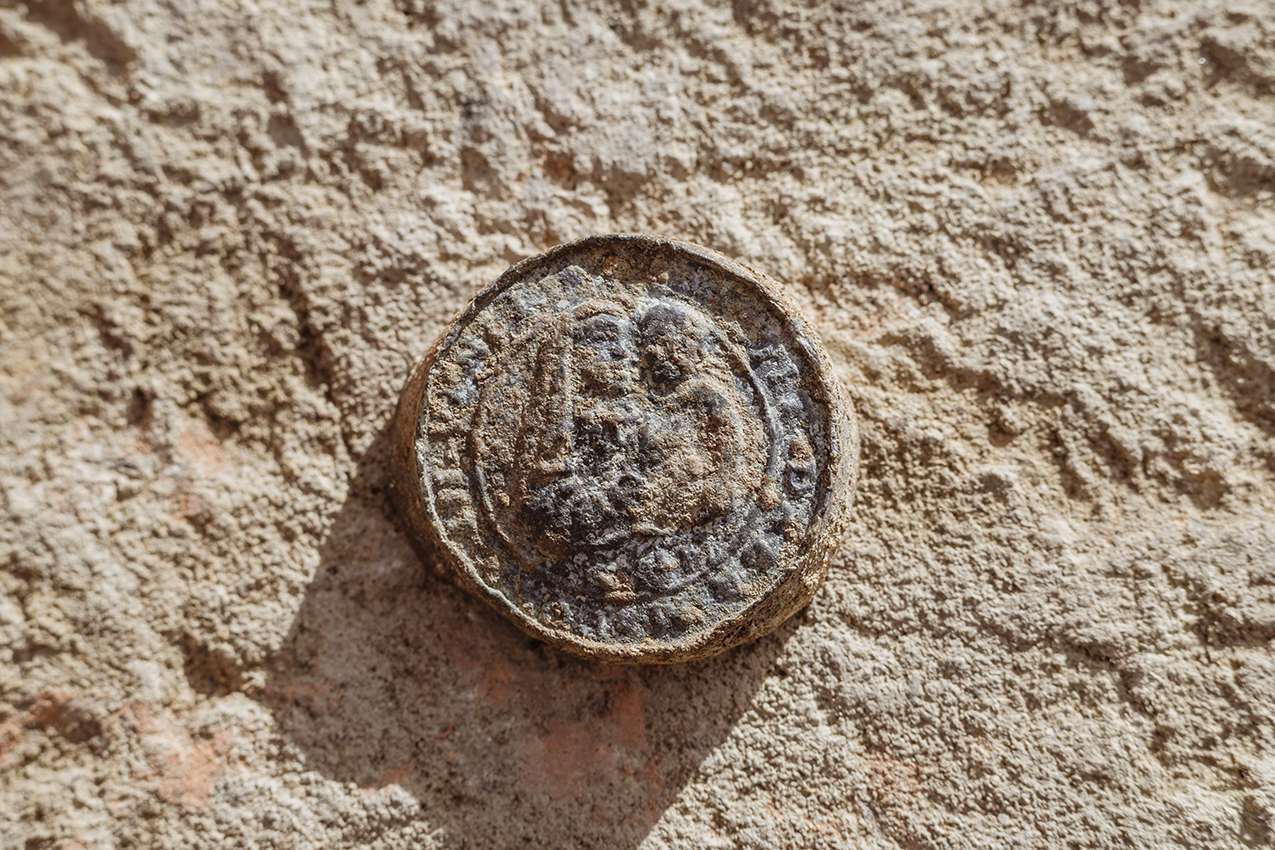A medieval stairway, a hidden section of castle wall and some highly valuable regal artefacts have just been uncovered at Buda Castle. Key find is Hungarian King Ferdinand II’s silver denarius coin. Archaeologists have also excavated the vault of a ramp that once led to the Baroque palace.
Buda Castle continues to throw up new and often surprising historical finds and archaeological discoveries. The latest announcement comes from experts exploring a building once used as a barracks at Táncsics utca 9, with centuries-old treasures brought to light. Here, they’ve also found a stairway that was mostly built in the Middle Ages, leading below ground.

The valuable unearthed objects include an ornate weight believed to be from the 15th or 16th century, as well as a lead cap belonging to a medicinal bottle from the 16-17th century, displaying an image of Mary and Jesus. A broken medallion attached to a silver chain, together with more than 20 coins have also been found, among them a Salzburg pfennig from the 1500s, and the silver denarius of Holy-Roman Emperor and Hungarian king Ferdinand II.
In collaboration with castle staff, specialists from the Budapest History Museum have unveiled an authentic, Zsigmond-era medieval section of castle wall at the southern forecourt of the Royal Palace, built in the 1530s. The top was found just ten centimetres below ground.

The vault of the 18th-century ramp that once led to the Baroque palace was found during the reconstruction of the southern connecting wing of the Royal Palace. It used to run – partly underground – from Szarvas tér all the way to the Oroszlános udvar. The tunnel-ramp remained intact until the castle’s renovations conducted by chief architect Alajos Hauszmann, and was thought to have been completely removed during the palace expansion in 1896. As this recent discovery revealed, parts were still hidden in the medieval fortress.





